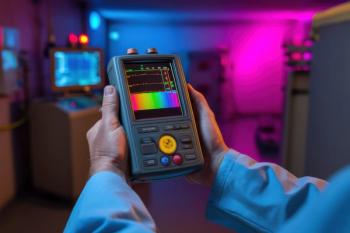
How do Pharmaceutical Laboratories Approach Elemental Impurity Analysis?
Spectroscopy sat down with James Harrington of Research Triangle Institute (RTI International) in Research Triangle Park, North Carolina, who was the lead author of this study, as well as coauthor Donna Seibert of Kalamazoo, Michigan. In Part I of our conversation with Harrington and Seibert, they discuss the impact of ICH Q3D and United States Pharmacopeia (USP) <232>/<233> guidelines on elemental impurity analysis and how they designed their study.
Pharmaceutical laboratories have to occasionally adjust in assessing elemental impurities because of the International Council for Harmonisation of Technical Requirements for Pharmaceuticals for Human Use (ICH) Guideline Q3D and USP Chapters <232>/<233>, both of which promote a risk-based approach (1,2). Recently, a published study in the Journal of Trace Elements and Minerals work aimed to address key technical challenges labs encounter while implementing these regulations (1).
Spectroscopy sat down with James Harrington of Research Triangle Institute (RTI International) in Research Triangle Park, North Carolina, who was the lead author of this study, as well as coauthor Donna Seibert of Kalamazoo, Michigan. In Part I of our conversation with Harrington and Seibert, they discuss the impact of ICH Q3D and United States Pharmacopeia (USP) <232>/<233> guidelines on elemental impurity analysis and how they designed their study.
How have the ICH Q3D and USP <232>/<233> guidelines changed the way pharmaceutical laboratories approach elemental impurity analysis?
Historically, to comply with compendial testing requirements for heavy metals, laboratories used a wet laboratory-based colorimetric method that had very low sensitivity, was susceptible to inaccuracy, and only addressed total metals rather than concentrations of specific metals. Although this method provides useful information, the most actionable information from a human health perspective comes from knowing how much and which elements are present.
The approach outlined in the modern guidelines of ICH Q3D and USP <232>/<233> aligned compendial testing with broader practices in environmental and biological laboratories that could provide this more detailed, sensitive, and accurate information to support human health risk assessment and decision making. The harmonized guidelines also allowed for targeted monitoring of elements based on a risk-based approach that minimizes the need for unnecessary testing. So, if a manufacturer can demonstrate in their regulatory filings that there is no risk of exposure to less common or less concerning elements, then the elements to be monitored can be refined to minimize the effort and resources required for testing. This approach is effective because it allows for more targeted, accurate risk assessments and reduces unnecessary testing, which makes the entire process faster and more cost-efficient.
What were the key considerations when designing this interlaboratory study, and how did you ensure consistency in sample preparation and analysis?
The Coalition for the Rational Implementation of Elemental Impurities Guidelines organized an initial interlaboratory study in 2014, which yielded useful information for the early stages of industry implementation related to inter- and intra-laboratory reproducibility of elemental impurity results. After sharing these findings more broadly, stakeholders expressed a desire for another check-in further into the implementation process and offered feedback on study design that could strengthen the significance of the findings and value for laboratories and manufacturers.
These suggestions included expanding the testing to more laboratories, preparing standard testing materials at several concentrations that were intended to mimic concentrations in real-world products, using pharmaceutically sourced raw materials in the production of the testing materials wherever possible, and development of parallel methods that could address both total digestion and exhaustive extraction approaches. Total digestion methods completely break down the samples, leaving no residue behind, usually using hydrofluoric acid or similar digestion agents. Exhaustive extraction is a rigorous acid extraction that could reliably recover all elements, despite leaving a residue after the reaction. These were the starting points that made up the framework of the study design.
Standardization of the methods is particularly important because of the multiple types of equipment and instruments available to laboratories for preparation and analysis. It was important to us to minimize the impact on variability that could result from instrumentation so that we could get a representative snapshot of the consistency of results between laboratories. This information would let us provide actionable information to stakeholders regarding best practices and potential hurdles. During laboratory recruitment, we asked participants to provide a detailed list of their sample preparation and analysis instrumentation so that we could design an inclusive method that could be used by as many of the participants as possible without modification. Our primary criteria for method development were as follows:
- Laboratories could safely perform the methods with their available instrumentation and protocols.
- Laboratories would not have to purchase specialized reagents, gases, or equipment.
One of the challenges that made this project interesting and relevant while working within these considerations was the availability of pharmaceutical raw materials that contained the elements of interest (Class 1 and 2a elements per ICH Q3D; As, Pb, Cd, Hg, V, Ni, and Co) at levels that were high enough to prepare testing materials at the desired concentrations. This was a challenging task that could be taken as an informal indicator of the risk of toxic metals in current pharmaceutical products. In the end, some elements were included by using silicon dioxide standards with known elemental concentrations.
References
- Harrington, J. M.; Seibert, D. S.; Williams, G.; et al. The Product Quality Research Institute Elemental Impurity Interlaboratory Study: Results and Implications for Industry. J. Trace Elem. Miner. 2025, 12, 100227. DOI:
10.1016/j.jtemin.2025.100227 - Thermo Fisher Scientific, Elemental Impurities Analysis Information. Thermo Fisher. Available at:
https://www.thermofisher.com/us/en/home/industrial/pharma-biopharma/pharma-biopharma-learning-center/pharmaceutical-qa-qc-information/elemental-impurities-information.html (accessed 2025-05-09).
Newsletter
Get essential updates on the latest spectroscopy technologies, regulatory standards, and best practices—subscribe today to Spectroscopy.





